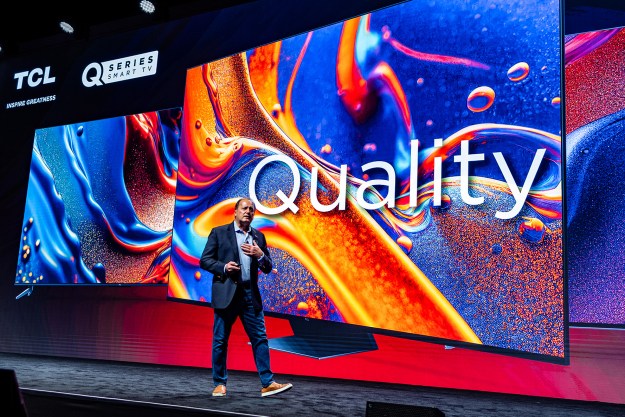CES 2022 is right around the corner, but LG Display apparently couldn’t wait until January to give us a sneak peek at two of the concepts it will be showing off in Las Vegas. One of them looks like it could be a future Peloton product, while the other could be the ultimate La-Z-Boy recliner.
Virtual Ride

Looking like a cross between a Peloton and an arcade game, LG Display’s Virtual Ride concept imagines what it would be like if that iPad-sized display on your exercise bike were actually big enough to provide you with a fully immersive riding experience.
It’s made from three vertical, 55-inch OLED displays that wrap up and over the stationary bike, forming one large, curved, r-shaped display, which LG Display claims will give users an immersive view both forward and above. The company says that the topmost of the three displays possesses the roundest curvature of any existing large display, with a radius of 500mm — something that can only be achieved with OLED technology, due to its inherent thinness and flexibility.
I’m not sure I’m ready to deal with a larger-than-life Peloton instructor barking positive reinforcements at me while I ride, but I can only imagine how cool it would be to go for a virtual ride through the Swiss Alps or a California forest.
Media Chair

The second concept takes us in the exact opposite direction, from getting fit to getting comfy. LG Display calls it the Media Chair, and it’s essentially a fancy recliner with an attached 55-inch OLED TV. It’s not just any OLED TV — like the displays used in the Virtual Ride concept, it’s curved, but this time the curvature is less extreme, with a radius of 1,500R — similar to the radius used for high-end gaming monitors.
The OLED TV also takes advantage of LG Display’s built-in sound technology called Cinematic Sound OLED. This uses transducers mounted directly to the back of the display to effectively turn the whole screen into a speaker. LG Electronics has never sold an OLED TV that uses Cinematic Sound OLED, but Sony has adopted it on several of its Bravia OLED TVs under the moniker Acoustic Surface Audio+.
The chair has several controls built-in, including the ability to rotate the OLED TV from landscape to portrait mode, a feature that Samsung brought to market in 2019 with its “The Sero” TV .
Because both the Virtual Ride and Media Chair are just concepts, not products, we don’t know when or if they’ll make their way into our homes, or what kind of price we could expect to pay for them. But you can bet there will be more than a few companies trying to figure out if they should be the ones to bring them to us.
Editors' Recommendations
- OLED vs. LED: Which kind of TV display is better?
- Could LG’s 3000-nit OLED finally end the brightness wars?
- TVs, soundbars, speakers and more: What we’re expecting in home theater at CES 2024
- LG’s DukeBox concept marries a tube amp with a transparent OLED display
- LG’s M-Series Wireless OLED TV is the future we need




